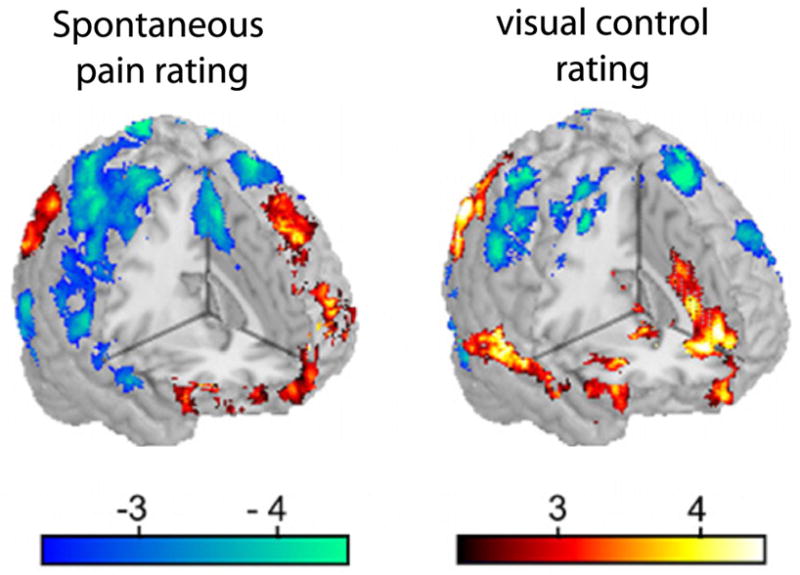Figure 7.

Intensity of ongoing chronic postherpetic neuropathy pain changes brain activity and thus cognitive processing in a complex pattern, for pain and non-pain tasks. The figure is adapted from a study [40] in which postherpetic neuropathy patients were studied before and after lidocaine application on the painful skin. Each patient was scanned at three time points relative to the drug therapy. In all cases the patients performed two different tasks: in the pain task they continuously rated the fluctuations of their spontaneous pain (left), and in the visual task they rated fluctuations of a bar varying in time (right). The relationship between brain activity and intensity of ongoing pain was determined using a covariate analysis, in which the related pain intensity for each fMRI scan was used to determine the effect of this parameter on brain responses. Across subjects and across all scans, average variation of brain activity is displayed for both tasks. The presence of the chronic pain effects activity in both tasks across large brain areas, rather similarly, increasing activity in some areas (red) and decreasing them in others (blue).
